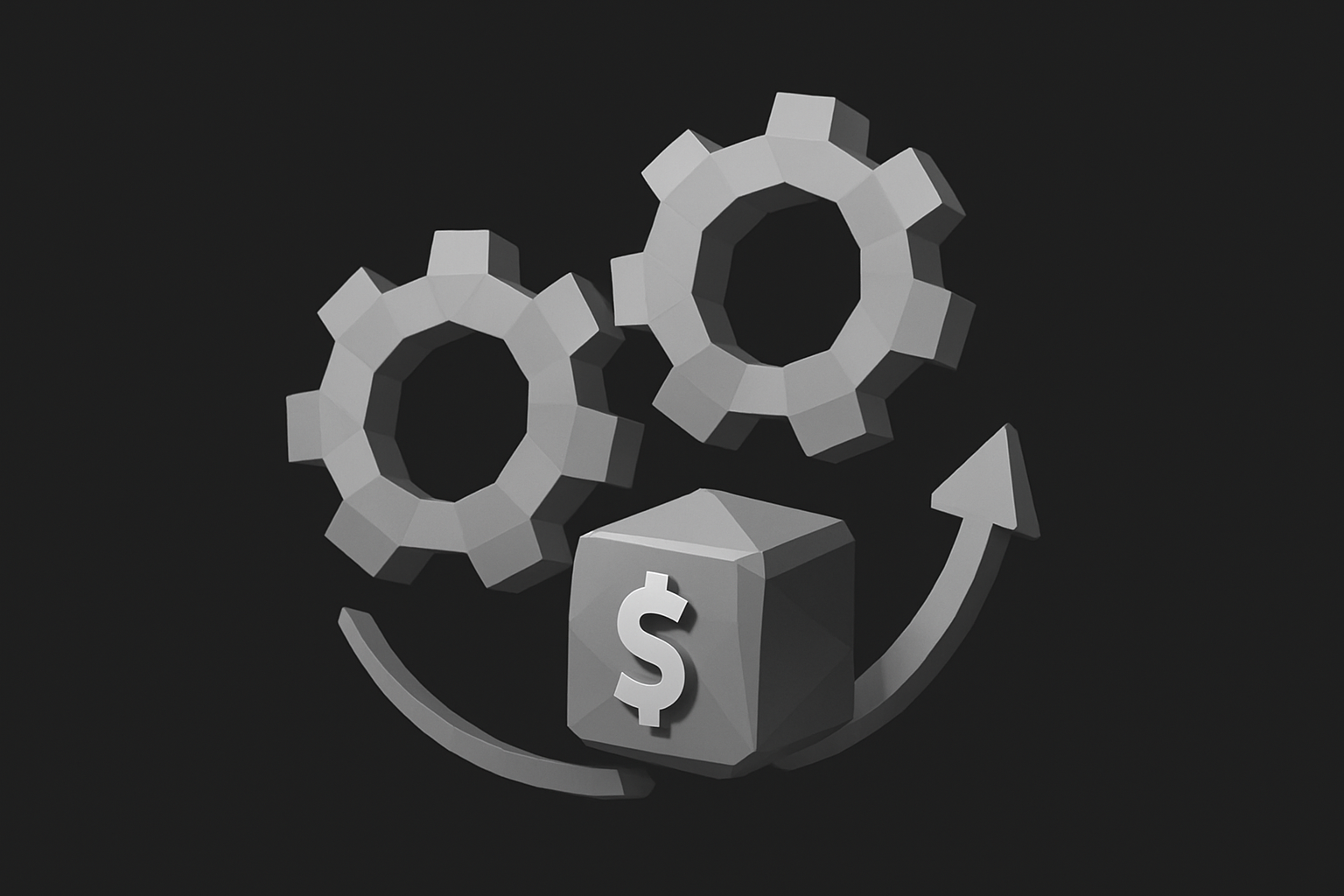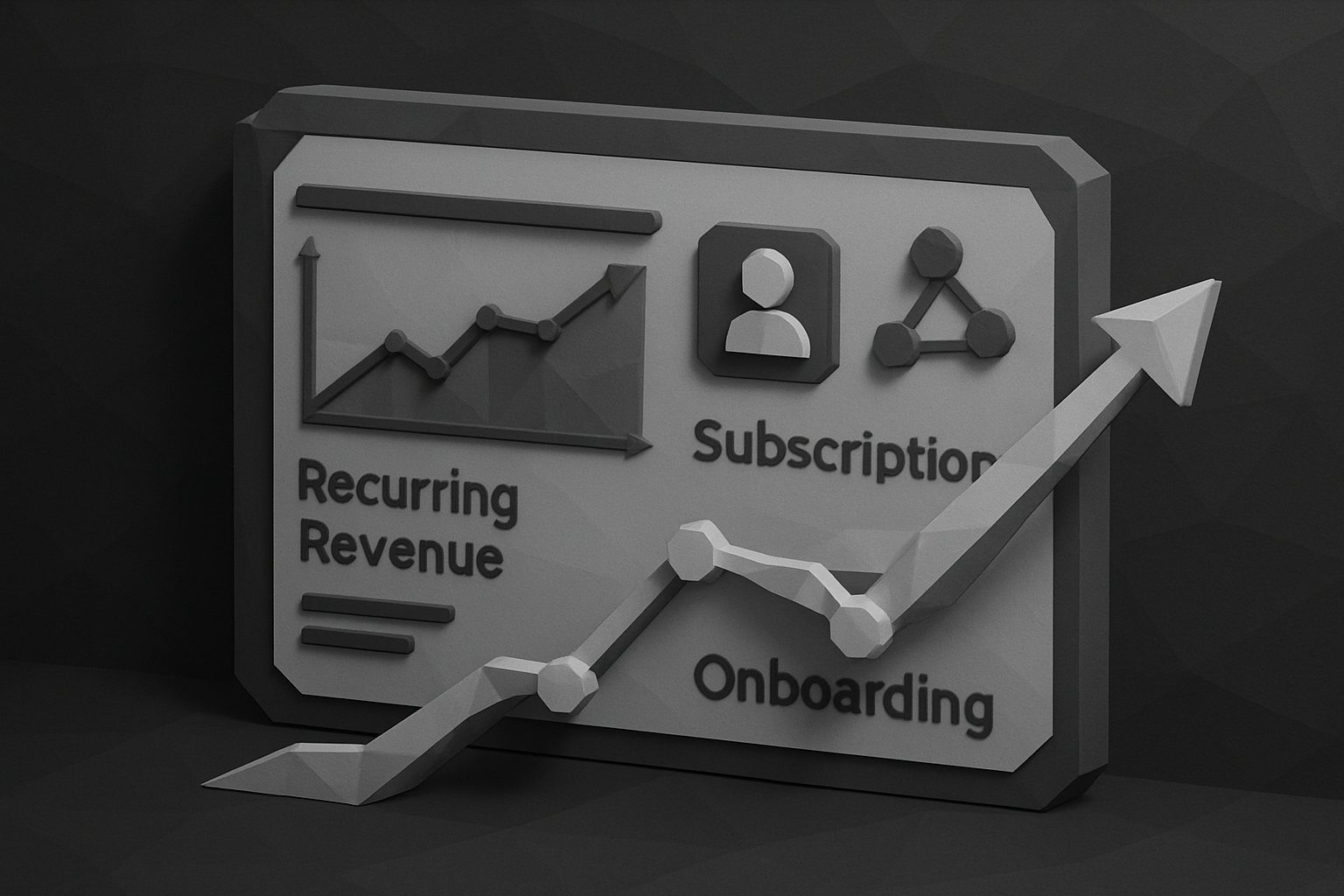Imagine waking up each month to a predictable stream of income—no guesswork, no surprises. That’s the power behind a recurring revenue model, transforming how digital businesses plan and grow.
In this guide, we’ll demystify the recurring revenue model and share proven strategies for maximizing your recurring income in 2025. You’ll discover what recurring revenue is, explore the most effective models, and learn actionable steps for implementation.
We’ll show you how to measure and optimize performance, overcome common challenges, and tap into the explosive stability and growth these models provide. Ready to refine your strategy and thrive in 2025? Let’s dive in.
Understanding Recurring Revenue Models
Recurring revenue models have transformed how businesses approach growth, stability, and customer relationships. Instead of chasing unpredictable, one-off sales, companies using a recurring revenue model enjoy a steady, reliable income stream that compounds over time. This approach is especially powerful for digital products and services, giving organizations a framework for long-term success.

What is Recurring Revenue?
A recurring revenue model is a business framework where revenue is generated at regular intervals—often monthly or annually—thanks to ongoing relationships with customers. Unlike traditional sales, where each transaction is a one-time event, recurring revenue models create predictable and stable income.
Key metrics include Monthly Recurring Revenue (MRR) and Annual Recurring Revenue (ARR), which help businesses forecast financial performance and plan for future growth. For example, a software-as-a-service (SaaS) company might charge users a monthly subscription fee, ensuring a base level of income every month.
Predictability is a major advantage. With a recurring revenue model, companies can better manage budgets, allocate resources, and make strategic investments. According to Paddle, SaaS companies leveraging recurring models tend to experience more stable and sustainable growth compared to those relying on one-off sales.
Core Types of Recurring Revenue Models
There are several ways to implement a recurring revenue model, each tailored to different industries and customer needs. Understanding these options helps businesses choose the right fit:
- Subscription Model: Customers pay a fixed amount regularly for continued access. Think Netflix or Adobe Creative Cloud.
- Usage-Based Model: Charges are based on actual usage, like AWS or utilities.
- Tiered Billing: Offers multiple pricing levels for different customer segments.
- Membership Model: Provides exclusive content or community access, as seen with Costco.
- Retainer Model: Clients pay ongoing service fees, common with legal and consulting services.
- License Model: Recurring payments for using software or digital content.
- Auto-Renewal Contracts: Agreements that automatically renew until canceled, keeping revenue streams active.
| Model Type | Example | Payment Frequency |
|---|---|---|
| Subscription | Netflix, Adobe | Monthly/Annual |
| Usage-Based | AWS, Utilities | Variable |
| Tiered Billing | SaaS Platforms | Monthly/Annual |
| Membership | Costco | Annual/Monthly |
| Retainer | Consulting, Legal | Monthly |
| License | Software, Content | Monthly/Annual |
| Auto-Renewal | Online Services | Ongoing |
Selecting the right recurring revenue model depends on your product, audience, and long-term goals. Many businesses even combine multiple models to maximize flexibility and reach.
Why Recurring Revenue Models Are Gaining Popularity
The recurring revenue model is booming for good reason. Consumer behavior has shifted from ownership to access—people now prefer subscribing to services over making large, upfront purchases. This shift allows businesses to focus on retaining customers rather than constantly acquiring new ones.
Predictable, compounding revenue streams mean companies can plan ahead with more confidence. Businesses with a recurring revenue model often see higher customer lifetime value, stronger relationships, and more stable growth. Streaming services like Netflix have revolutionized the entertainment industry by adopting subscriptions, leading the way for others.
Investors also favor companies with this model, as predictable income increases business valuation and attracts funding. For more insights, check out these Subscription Economy Growth Statistics highlighting the explosive adoption of recurring models across industries.
Recurring revenue models are not just a trend—they're an essential strategy for digital businesses aiming to thrive in 2025 and beyond.
Key Benefits of Recurring Revenue Models
Recurring revenue models have revolutionized how businesses approach growth and sustainability. By shifting away from unpredictable, one-time transactions, companies can unlock a range of advantages that go far beyond just steady income. Let's break down the core benefits every business leader should know about this approach.

Revenue Predictability and Financial Stability
A recurring revenue model provides a steady stream of income that makes financial planning far less stressful. Instead of guessing how much money will come in each month, you can rely on predictable cash flow. This consistency allows businesses to budget more effectively, plan for future investments, and weather economic ups and downs.
For example, SaaS companies use metrics like ARR and MRR to project future growth, allocate resources, and make data-driven decisions. When you can anticipate revenue, you’re better positioned to take calculated risks and seize new opportunities. That’s the power of a recurring revenue model—financial stability that supports long-term vision.
Enhanced Customer Retention and Loyalty
One of the most significant advantages of a recurring revenue model is how it nurtures stronger customer relationships. When customers subscribe or commit to ongoing payments, they’re more likely to stick around—especially if you consistently deliver value.
Continuous engagement builds trust and reduces churn. Companies that focus on retention, rather than just acquisition, often see faster, more sustainable growth. According to Paddle, retention is a key driver in maximizing growth for businesses using a recurring revenue model. The longer customers stay, the more valuable they become, creating a virtuous cycle of loyalty and satisfaction.
Scalability and Business Valuation
A recurring revenue model is inherently scalable, especially for digital products and services. As you add new subscribers, your revenue grows without a proportional increase in costs. This efficiency is a major reason why investors are drawn to companies with recurring streams.
Businesses with this model also tend to receive higher valuations, thanks to their predictable income and lower risk profiles. As highlighted in Recurring Revenue Business Model Insights, this predictability is a game-changer for attracting capital and fueling expansion. In essence, a recurring revenue model makes your business more appealing to both buyers and investors.
Opportunities for Upselling and Cross-Selling
Recurring revenue models create regular touchpoints with customers—every invoice or interaction is a chance to offer more value. This opens the door for upselling premium features, cross-selling related products, or introducing new services.
Take the freemium approach: users start with basic access, and as their needs grow, they upgrade to paid plans. Spotify, for instance, converts free users to paid subscribers by offering exclusive benefits. With each interaction, you’re building a deeper relationship and increasing the average revenue per user. The recurring revenue model transforms every customer touchpoint into an opportunity for growth.
Common Challenges and How to Overcome Them
Recurring revenue model businesses offer stability and growth, but they come with their own set of hurdles. Understanding these challenges—and knowing how to tackle them—can make the difference between thriving and struggling in 2025. Let’s break down the most common pitfalls and practical strategies to overcome them.

Managing Churn and Customer Satisfaction
Churn is the silent killer of any recurring revenue model. Losing customers faster than you gain them can quickly erode predictable income. To combat this, watch for warning signs—such as decreased engagement or skipped payments—using analytics tools.
- Proactively engage at-risk users with personalized emails.
- Offer incentives or upgrades to keep subscribers onboard.
- Establish feedback loops to learn why customers leave.
For example, SaaS companies often monitor usage data to identify disengaged clients and reach out before they cancel. By making customer satisfaction a priority, you reduce churn and strengthen the recurring revenue model’s foundation.
Demand for Continuous Customer Support
Unlike one-off sales, a recurring revenue model demands ongoing support. Customers expect fast, effective help at every stage. This means investing in robust support systems—think chatbots, knowledge bases, and responsive teams.
- Automate common queries to speed up responses.
- Maintain a balance between digital tools and human touch.
- Regularly update resources based on real user feedback.
High-quality support not only keeps existing subscribers happy but also encourages referrals. In a recurring revenue model, every positive customer interaction helps foster long-term loyalty.
Pricing Complexity and Contract Length Decisions
Choosing the right pricing strategy is critical for any recurring revenue model. Should you offer long-term contracts or flexible month-to-month plans? Both have pros and cons.
- Longer contracts reduce churn but may deter sign-ups.
- Shorter terms attract more users but can increase volatility.
For instance, telecom companies often use annual agreements, while many SaaS providers favor monthly billing. Test different approaches to see what your audience prefers. Remember, clear communication of pricing and contract terms builds trust and supports growth in your recurring revenue model.
Compliance, Taxation, and Payment Processing
Handling payments and compliance can be daunting—especially for global businesses using a recurring revenue model. You must navigate taxes, fraud prevention, and ever-changing regulations.
- Automate billing and tax calculations with specialized platforms.
- Stay informed about local and international compliance rules.
- Protect both your business and customers with secure payment systems.
According to the State of Subscriptions and Recurring Billing, businesses that invest in streamlined payment processing see fewer disputes and higher retention. Mastering these logistics ensures your recurring revenue model remains hassle-free and scalable.
Step-by-Step Strategies to Implement a Recurring Revenue Model in 2025
Launching a successful recurring revenue model in 2025 requires a clear plan and a customer-first mindset. Whether you’re building a SaaS platform, launching a membership site, or offering digital products, these step-by-step strategies will help you create a sustainable, scalable income stream that thrives year after year.

1. Identify the Right Model for Your Business
The first step in implementing a recurring revenue model is to match your offerings to the best-fit structure. Digital products, SaaS solutions, and memberships each suit different audiences and industries. Research your target customers—do they value ongoing access, exclusive content, or scalable services?
Benchmark competitors in your space to see which recurring revenue model drives results. Don’t forget to analyze market trends and customer feedback. For a deeper dive into choosing the right digital product and revenue approach, consult this Comprehensive digital products guide.
Key checklist:
- Map your products/services to possible recurring models.
- Survey customers about preferences.
- Study competitors’ pricing and retention tactics.
Choosing the right recurring revenue model sets the foundation for long-term growth.
2. Design Compelling Offers and Pricing Structures
Crafting irresistible offers is essential for recurring revenue model success. Decide between flat-rate, tiered, or usage-based pricing—each appeals to different customer segments. Build a value ladder by offering basic, pro, and premium plans to encourage upgrades.
Incentivize adoption with free trials or freemium options, lowering the barrier for new users. Validate your pricing with market research and adjust as needed. Here’s a quick comparison:
| Model Type | Best For | Example |
|---|---|---|
| Flat-rate | Simplicity | Netflix |
| Tiered | Segmentation | Adobe Cloud |
| Usage-based | Flexibility | AWS |
A well-designed offer not only attracts customers but also maximizes lifetime value in your recurring revenue model.
3. Build Seamless Onboarding and Billing Experiences
Frictionless onboarding and billing are non-negotiable for any recurring revenue model. Streamline your sign-up flow—make it quick and intuitive. Automate billing cycles and set up reminders for renewals or failed payments.
Communicate terms and renewal policies clearly so customers know what to expect. Invest in platforms that provide built-in compliance and fraud protection, saving time and reducing risk. Consider the following:
- Use simple, step-by-step onboarding checklists.
- Offer guided tours or tutorials for new users.
- Implement secure, automated payment gateways.
By perfecting onboarding and billing, you’ll boost satisfaction and reduce early churn in your recurring revenue model.
4. Foster Customer Engagement and Reduce Churn
Ongoing engagement is the heartbeat of a strong recurring revenue model. Keep your audience invested with regular updates, value-packed newsletters, and responsive support. Monitor user activity to spot disengaged customers before they leave.
Personalize communications—tailor offers and loyalty programs based on user behavior. Use feedback surveys to gather insights and act quickly on suggestions. Proactive outreach to at-risk users can make all the difference.
- Segment customers by usage or plan.
- Reward loyalty with exclusive content or discounts.
- Respond promptly to queries and concerns.
Reducing churn ensures your recurring revenue model delivers stable, predictable income.
5. Measure, Analyze, and Optimize Performance
Data is your north star when refining a recurring revenue model. Track core metrics like MRR, ARR, churn rate, CLV, and ARPU. Use dashboards and analytics tools to spot trends, bottlenecks, and opportunities.
A/B test pricing, messaging, and offers to see what resonates. Iterate quickly based on what the data tells you. Here’s a sample tracking table:
| Metric | Goal | Tool |
|---|---|---|
| MRR/ARR | Growth | Paddle/Stripe |
| Churn Rate | < 5% | Analytics |
| CLV | Increase | CRM |
Constant optimization keeps your recurring revenue model competitive and future-ready.
6. Plan for Scale and Future-Proofing
As your recurring revenue model grows, automation and scalability become crucial. Automate onboarding, billing, and support to handle more customers with less manual effort. Invest in robust infrastructure and tools that can scale globally.
Stay ahead of regulatory changes—ensure multi-currency support and tax compliance as you expand. Regularly review market trends to adapt your model. Preparing for tomorrow ensures your recurring revenue model remains resilient.
- Automate repetitive processes.
- Monitor regulatory updates.
- Build for international growth from day one.
With the right foundation, your recurring revenue model will not only thrive in 2025 but also weather changes for years to come.
Measuring Success: Essential Metrics for Recurring Revenue Businesses
Tracking the right metrics is crucial for steering your recurring revenue model toward sustainable growth. By focusing on a handful of key indicators, you can diagnose issues early, optimize performance, and unlock your business’s full potential. Let’s break down the essential metrics every recurring revenue model should monitor.
Monthly Recurring Revenue (MRR) and Annual Recurring Revenue (ARR)
MRR and ARR are the heartbeat of any recurring revenue model. MRR measures the predictable monthly income from active subscriptions, while ARR simply multiplies MRR by 12 for an annualized view. These metrics help you forecast growth, allocate resources, and spot trends over time.
| Metric | Formula | Purpose |
|---|---|---|
| MRR | Total monthly revenue | Short-term predictability |
| ARR | MRR × 12 | Long-term planning |
Modern analytics platforms like Paddle and Stripe offer real-time tracking, letting you see the impact of pricing changes or new signups instantly. According to SaaS Market Trends and Projections, monitoring these metrics is standard practice for leading SaaS businesses. Every recurring revenue model should treat MRR and ARR as core health indicators.
Churn Rate and Customer Lifetime Value (CLV)
Churn rate tells you what percentage of customers leave during a set period—a high churn signals trouble for any recurring revenue model. On the flip side, CLV shows how much revenue you can expect from a typical customer over their relationship with your business.
To improve these metrics:
- Proactively engage at-risk users
- Offer personalized incentives
- Analyze exit feedback for trends
Lowering churn and raising CLV both boost long-term revenue. In a recurring revenue model, even small improvements in retention can yield exponential growth.
Net Revenue Retention and Expansion Revenue
Net Revenue Retention (NRR) measures how much recurring revenue remains from existing customers after accounting for churn, upgrades, and downgrades. Expansion revenue includes upsells, cross-sells, and add-ons—critical for growing a recurring revenue model without relying solely on new customers.
What counts as expansion?
- Upgraded subscription tiers
- Add-on features or services
- Additional user seats/licenses
A healthy NRR (over 100%) means your recurring revenue model is not just stable, but expanding from your current base.
Usage and Engagement Metrics
Usage and engagement metrics reveal how customers interact with your product or service. High engagement often signals satisfaction, while declining activity can predict churn in a recurring revenue model.
Track:
- Login frequency and session duration
- Key feature adoption rates
- Support ticket volume
- Feedback and satisfaction scores
For digital businesses, these insights help shape product updates and marketing campaigns. If you’re interested in building a recurring revenue model around digital products, explore these building digital products strategies to maximize engagement and retention.
Future Trends and Innovations in Recurring Revenue for 2025
As the digital landscape rapidly evolves, the recurring revenue model is also transforming, driven by technological advances and changing consumer expectations. Let’s explore the most significant trends and innovations shaping the future of recurring income streams in 2025.
Personalization and AI-Driven Experiences
AI and machine learning are revolutionizing the recurring revenue model by enabling businesses to deliver deeply personalized experiences. Companies now leverage AI to analyze customer behavior, predict churn, and recommend tailored products or pricing. This allows for dynamic upselling and retention strategies that feel relevant to each user. For example, AI-powered platforms can trigger personalized renewal offers or discounts based on user engagement patterns. As personalization becomes the norm, brands that harness AI will see increased loyalty and longer customer lifecycles within their recurring revenue model.
Expansion of Recurring Models Beyond SaaS
While SaaS platforms pioneered the recurring revenue model, 2025 will see this approach thriving in new sectors. Physical products, such as meal kits and curated subscription boxes, are adopting subscription billing. The education, fitness, and creator economies also leverage memberships and hybrid models for predictable income. If you’re exploring digital product ideas, many options—like templates, online courses, or design assets—can be monetized with recurring revenue. For inspiration, browse this list of digital products to sell online and discover how the recurring revenue model can be applied across industries.
Integration with Global Payment and Compliance Solutions
Global expansion demands seamless billing, tax compliance, and multi-currency support. The recurring revenue model now relies on robust platforms that automate these complexities. Stripe, Paddle, and similar solutions help manage payment processing, VAT, and fraud protection across borders. This integration not only reduces administrative overhead but also ensures a frictionless customer experience. With regulatory landscapes shifting, businesses adopting an integrated approach to payments and compliance are better equipped to scale their recurring revenue model worldwide.
Data-Driven Product Development and Customer Insights
Modern recurring revenue model strategies depend on real-time analytics to guide decision-making. Businesses track user behavior, feature adoption, and engagement metrics to refine offerings and improve retention. Feedback loops—through surveys or usage data—inform product updates and marketing. Adopting a create once, sell forever model can further enhance scalability, allowing digital products to generate recurring income with minimal ongoing effort. In 2025, data-driven iteration is essential for staying ahead in the competitive recurring revenue model landscape.
Sustainability and Ethical Subscription Practices
Consumers are demanding transparency, flexibility, and fairness from brands that use a recurring revenue model. Easy cancellations, clear billing, and ethical retention tactics are now expected. Companies prioritizing these values build stronger trust and brand loyalty. Sustainability also plays a role, with eco-conscious packaging and digital alternatives gaining traction. By aligning recurring revenue model practices with customer values, businesses not only retain subscribers but also enhance their reputation in a crowded market.
Building Community and Value Beyond the Product
The recurring revenue model is evolving beyond simple transactions. Brands are fostering exclusive communities, offering value-added experiences such as events, resources, or networking opportunities. Membership models with perks—like early access, private forums, or expert Q&As—boost engagement and perceived value. In 2025, building a vibrant community around your recurring revenue model will be key to differentiating your offering and driving long-term growth.
If you’re ready to stop trading hours for dollars and want to build something that grows while you sleep, now’s the time to put these recurring revenue strategies into action. We’ve covered the essentials—from picking the right model to scaling and optimizing for long-term success—so you’ve got a solid foundation. The next step? Turn your knowledge into a thriving digital product business and start building predictable, sustainable income. If you’re excited to make 2025 your year of recurring revenue, let’s take that first step together: Get Started